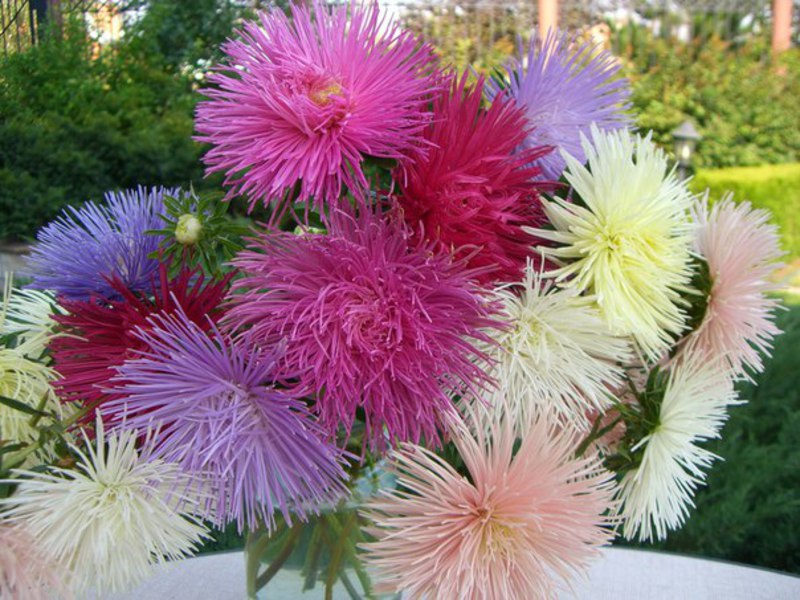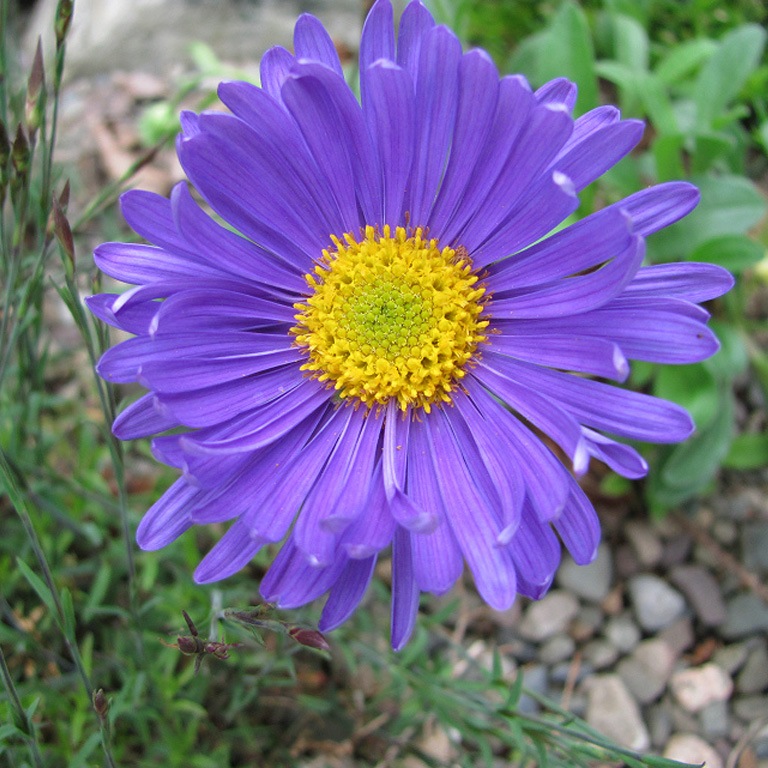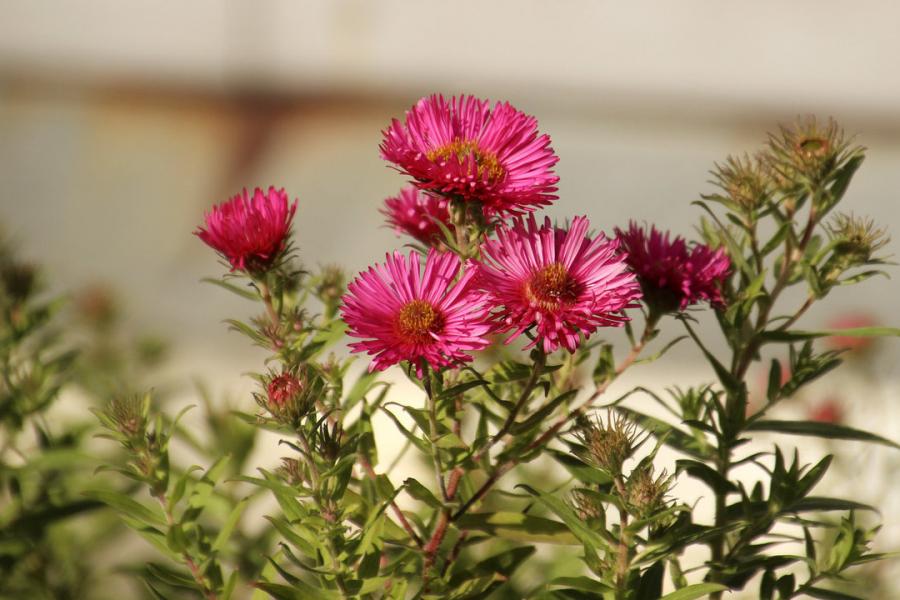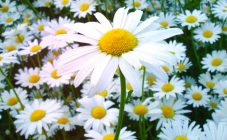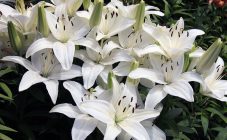Content:
Not every gardener is able to keep up with garden crops, as well as flower beds. And I really want to provide my site with beautiful flowers. In this case, unpretentious care, but very beautiful asters will help.
General information
The biological characteristics of this plant species determine the rules for its cultivation and the main points of agricultural technology.
Aster belongs to the Asteraceae family. Initially, scientists gave this type of aster the name Chinese callistephus (callistephus chihensis), but most often the plant is found under the name Chinese aster or annual. There are also perennial species of this culture.
The seeds are covered with a dense shell, but despite this, they germinate very quickly (4-7 days after planting). Flowering can be observed 80-125 days after germination. Flowers are represented by a dense inflorescence - a basket. There are three types of petals in nature:
- transitional;
- tubular;
- reed.
Many varieties are called terry, but in reality this is a little different. The terry effect is achieved due to the fact that tubular flowers grow into reed flowers. Also, the effect of terry can be created by lengthening the reed inflorescences.
The autumn flower is used not only for growing in the garden and on the flower beds of the streets, but also for the formation of excellent bouquets and compositions. What is an aster in a bouquet? The meaning of aster flowers is a recognition of tenderness and love, fiery feelings and beauty. The shade of emotion can be displayed using different colors.
History of origin
The homeland of the wild-growing aster is the northern region of Korea, China and Manchuria. In Russia, the wild representative is found in isolated areas and is on the verge of extinction. Today, its range is small.
As a garden culture in Europe, the plant began to be used in 1728, according to some information from history it is known that the seeds of the cultivated form were brought from Beijing. In France, references to this culture date back to 1745, in England - to 1752.
Specifications
Finding out what an aster looks like is not difficult. It is a common plant that can be seen in every flower bed.
Aster is a herb that pleases its owners with abundant flowering, which, depending on the variety, starts in July and lasts until the very frost. The plant is distinguished by a branched fibrous root system. The leaves are arranged in the following order: from below on cuttings, from above planted on a stem. Aster leaves can be oval-rhombic or broadly oval.
The inflorescence can consist of one or more tubular and reed flowers of various shades. Inflorescences can be white to purple in color.
In nature, there is also a wild representative of this culture, which is not an ornamental plant. Modern gardeners grow various hybrids, which can differ in shape, color, height and type of shrubs. When choosing a variety of flowers for your flower bed, it is important to understand when asters are blooming. The flowering period is completely different: from July to frost.
Prefers light soils with neutral acidity, does not like fresh manure as fertilizer. Its presence in the ground can lead to Fusarium infection. It is best to use humus as organic matter.
Varieties and types
Annual asters come in a wide variety of varieties. Most often, the annual species is called garden aster, often a mixture of different colors is sold under this name. This plant can be dwarf (short) and tall, double or simple. There is also a wide variety of varieties in shape and color.
Asters are also divided according to the shape of the inflorescences:
- The spherical variety is represented by a large group of varieties, united by the shape of an inflorescence, which resembles double spherical flowers.
- The chrysanthemum group are plants in which flowers are very similar in appearance to chrysanthemums.
- Group "ostrich feather" - aster flowers consist of petals that visually resemble feathers.
- Pink asters - the flowers look like a rose in appearance.
- Peony asters - characterized by lush flowers with narrow petals pointed to the edge.
- Aster pomponnaya - differs in inflorescences that resemble peonies in appearance. Flowers have beautiful double petals.
- Needle flowers are very beautiful terry representatives of this plant. Inflorescences are very similar in appearance to peonies.
Long-term representatives of this culture will also delight in diversity:
- Novobeli views. A large selection of varieties differing in the height of the bushes, the color of the inflorescences. Can be used to decorate flower beds, borders. Bloom until the very frost, starting in September.
- New England asters. These bushes are much more lush and reach a height of up to 1.5 m. Representatives of this group have pink inflorescences and bloom in autumn.
- Italian aster. Beautiful bushes with large flowers that bloom in summer. The height of the plant is average - up to 70 cm, purple shades prevail.
- Astra Flikarta has blue-violet flowers that begin to open from mid-July. The height reaches 80 cm.
- Thomson's aster is a low-growing perennial that blooms in July.
Asters also differ in terms of ripening. There are varieties that begin to delight with flowering in summer, there are those that bloom in the fall and continue until late autumn.
Most gardeners choose autumn mixes, since summer asters are significantly inferior to other colors, despite the visual similarity. You can list flowers similar to aster for a long time, they are all gorgeous and beautiful. In the fall, it is very pleasant to see a flower that resembles peonies, chrysanthemums, roses or other summer species. For example, the red peony aster is so similar to peonies that it seems as if the spring flowers have decided to please their owners in autumn.
Features of agricultural technology
Aster care is a description of simple measures, since the plant is very unpretentious, there will be no difficulties in growing it.
Landing
It can be grown by sowing seeds in open ground or using seedlings. Sowing seeds should be carried out from mid-March to early April. It is important that the soil is already warmed up enough for sowing. Growing pompom, peony or any other aster seeds from aster seeds should not be difficult if you follow these little tricks. You can plant seedlings even earlier.
Before sowing, the soil is fertilized for several days. The culture is relatively unpretentious, but still prefers fertilized nutrient soils. Being in the sun or in the shade, she doesn't care.
Soil preparation should be done in the fall. They dig it up, bring in humus, peat and sand. Already in the spring, the soil is fertilized with superphosphates, sulfuric acid fertilizer, potassium salt.
Care
The main points of leaving will be the implementation of simple activities:
- moderate watering;
- loosening the soil with careful removal of weeds;
- fertilizing once a season;
- prevention and treatment of diseases.
Pests and diseases
Despite the ease of care, growing can be difficult. In autumn, the culture can be affected by powdery mildew. Gray-white marks appear on the leaves. The causes of damage are most often the lack of nutrients, thickening of the plantings, the elderly age of perennial varieties and dry soil. As a preventive measure, you need to follow the rules of care; you can use a solution of colloidal sulfur for treatment.
Also, leaves can be affected by annular spotting (concentrated rings appear). Sore rings should be removed immediately by burning. As a preventive measure, every two weeks the plant should be treated with Bordeaux liquid, foundation, polychoma.
Sometimes the flowers are affected by jaundice, the disease is very insidious, so plants should be removed. They can also develop gray mold. To stop the development of the disease, they should be treated with copper-containing preparations during the budding period. After a month, the processing is repeated.
Among the pests that infect the plantings, spider mites, slobbering pennits, gall or leaf nematodes stand out.
As you can see, the autumn star can decorate the flower bed of any gardener, even a beginner, since its cultivation does not require compliance with complex rules and providing unique conditions. A minimum of care and attention, and the flower bed will delight you with beautiful lush flowers for a long time.

